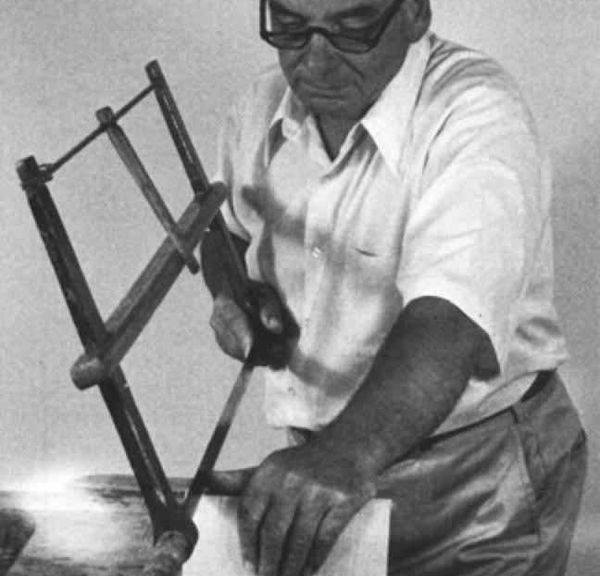Sawing by hand
Legendary Danish-born woodworker Tage Frid extols the virtues of handsaws over machine-powered saws.

Synopsis: Tage Frid says a handsaw can replace a machine-powered saw for every cutting operation. It should lie loosely in your hands, and no pressure should be applied, particularly when starting the cut, he writes. He discusses the different handsaws available on the market and how they are designed for special purposes. The bowsaw, scroll bowsaw, offset dovetail saw, and rip panel saw are most useful in Frid’s shop, and he explains how to sharpen them and how to refile them from crosscutting to ripping. He describes how to make a vise for sharpening and how to make a bowsaw. And he offers a tutorial on using handsaws.
A handsaw can replace a machine-powered saw for every cutting operation. The correct use and maintenance of handsaws should be practiced until they are second nature. To saw properly, coordination of the joints in the hand, elbow and shoulder must be achieved. The biggest mistake most people make when using a handsaw is to hang onto it as if their lives depended on it, bearing down much too hard. This makes it hard to start the saw, and once the cut is started, it is difficult to follow the line. A handsaw should lie loosely in your hands. No pressure should be applied, particularly when starting the cut. Once experience is gained, a slight amount of pressure can be applied after the cut is started. Use your thumb as a guide when starting the saw.
There are many different handsaws on the market, and each one is designed for a special purpose. Handsaws are sold by length and by the number of points—a six-point saw has six teeth per inch.
The bowsaw, scroll bowsaw, offset dovetail saw and rip panel saw are the saws I have found most useful in my many years as a cabinetmaker. I don’t like and would never buy a backsaw; they are clumsy and heavy. Maybe they are all right in miter boxes, but a bowsaw will do the job faster.
For general sawing, I would recommend buying a 26-in., six-point and an 18-in., eight-point bowsaw. (Lengths might vary, because most bowsaws are made in Europe and so are measured metrically.) I would also buy a 26-in. scroll bowsaw, preferably with interchangeable blades, and a 10-in., or longer, 15-point offset dovetail saw. A 24-in. rip panel saw (the standard American carpenter’s saw), six to seven points, is useful for cutting big pieces such as plywood, where the bridge of the bowsaw would be in the way.
Japanese saws are good for special work. I have some but hardly ever use them, except in cramped space where I can’t get in with a regular saw. The Japanese ripsaw cuts on the pull stroke. This makes the line fuzzy and hard to see when cutting joints. On the crosscut, the teeth are long and might bend when hitting a knot. Also, the saw is hard to resharpen.
For scroll work, I would of course use a band saw if I could. Or I might use a saber saw. But a scroll bowsaw will cut as fast or faster than a saber saw, and no electricity is needed. The blade on the scroll bowsaw is considerably longer than that of any other scroll saw or coping saw.
From Fine Woodworking #8
For the full article, download the PDF below:
Fine Woodworking Recommended Products

Veritas Precision Square

Olfa Knife







Log in or create an account to post a comment.
Sign up Log in